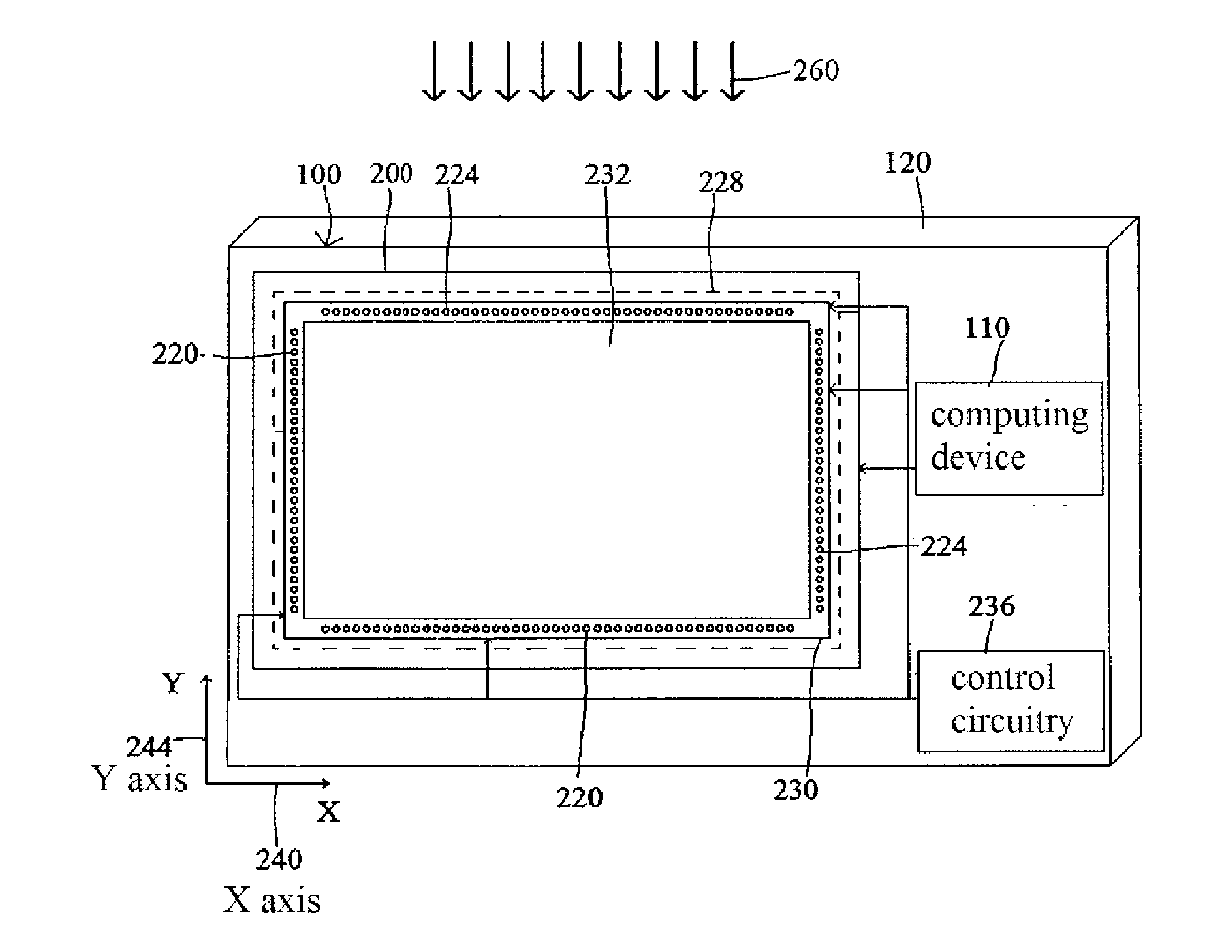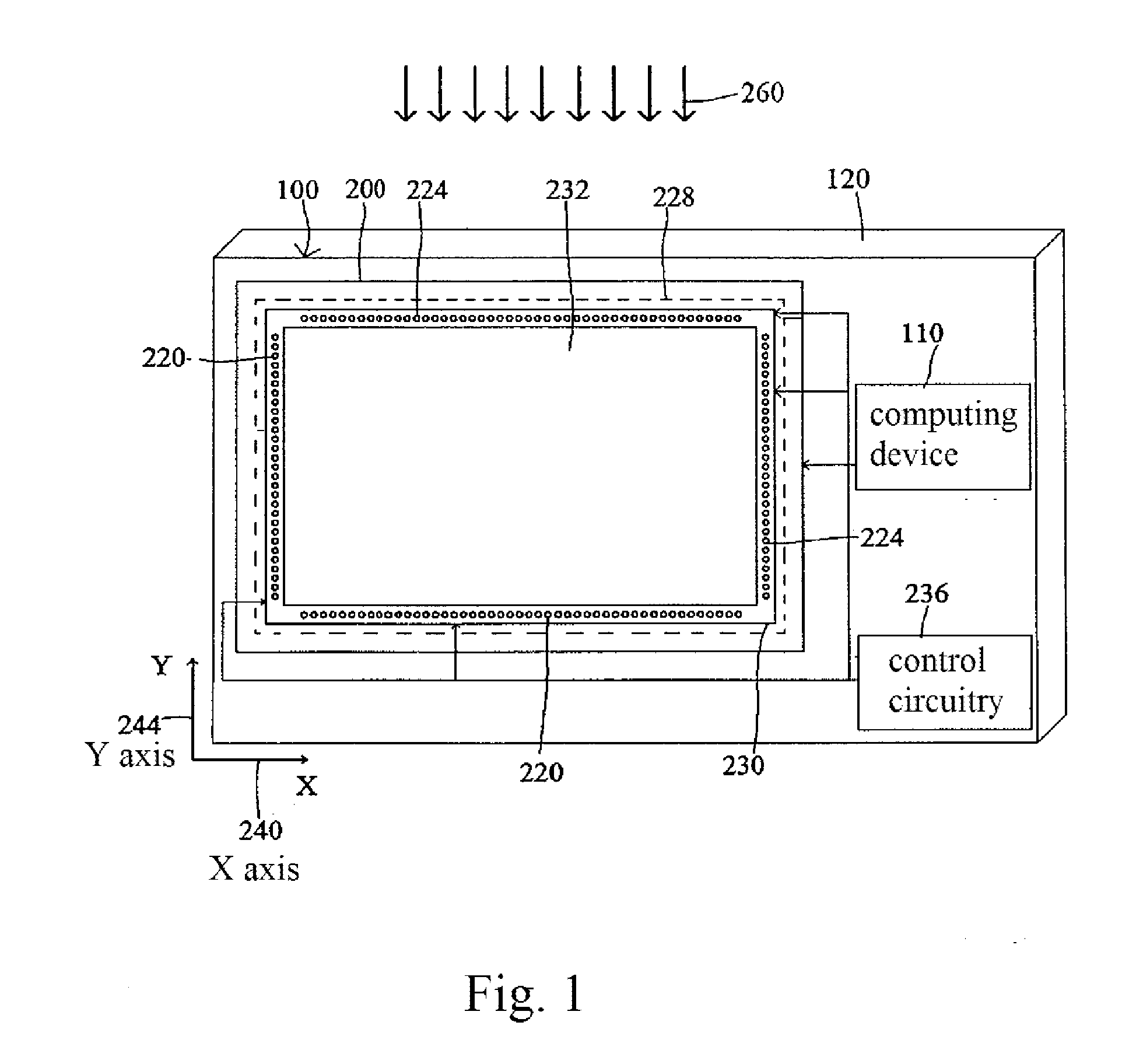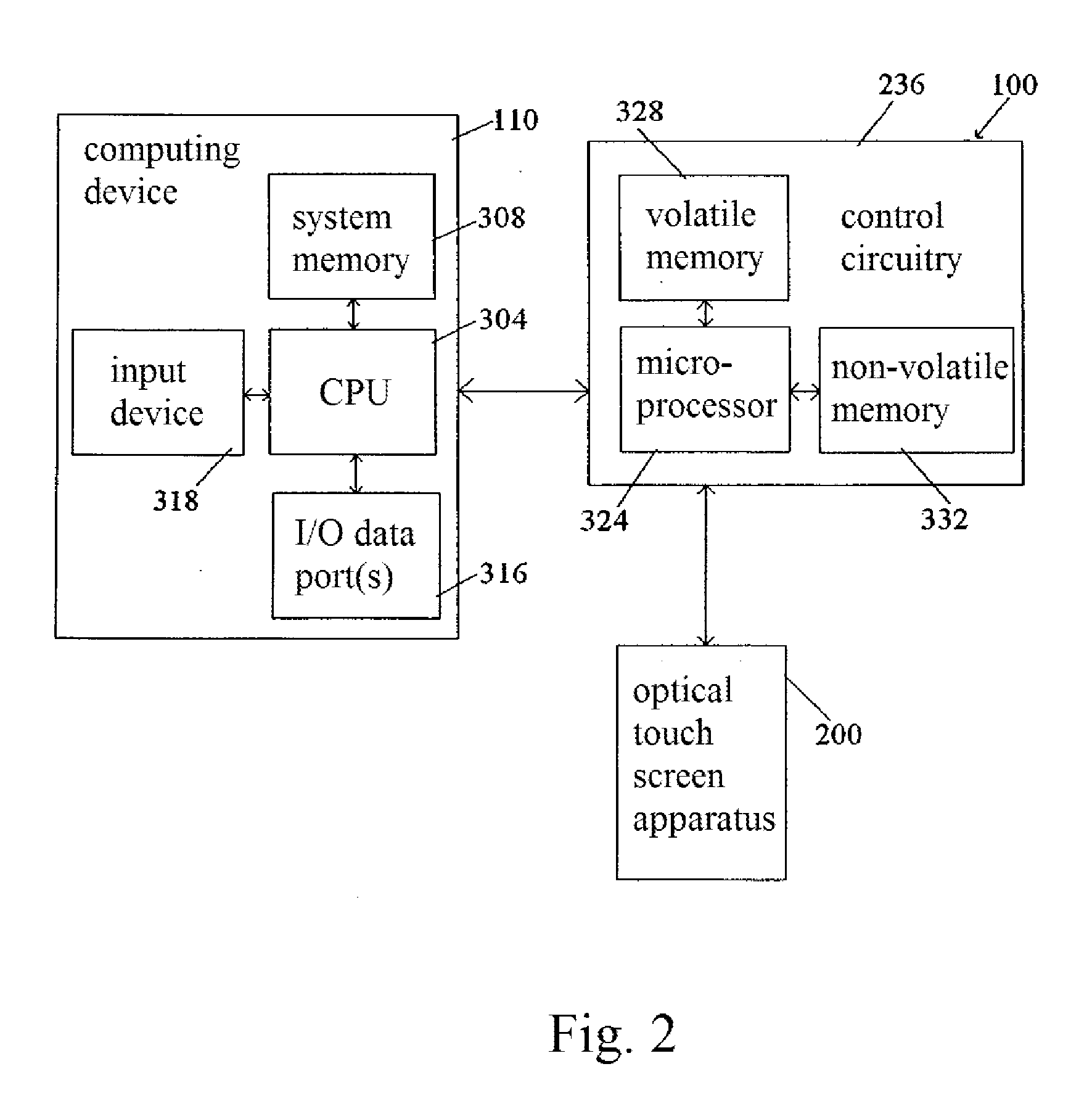Method and Device for Adjusting Brightness of an Optical Touch Panel
a technology of optical touch panel and brightness adjustment, which is applied in the direction of instruments, light sources, computing, etc., can solve the problems of unsuitable fixed brightness level, waste of energy, and waste of energy
- Summary
- Abstract
- Description
- Claims
- Application Information
AI Technical Summary
Benefits of technology
Problems solved by technology
Method used
Image
Examples
Embodiment Construction
[0032]Reference throughout this specification to “one embodiment,”“an embodiment,” or similar language signifies that a particular feature, structure, or characteristic described in connection with the embodiment is included in at least one embodiment. Thus, appearances of the phrases “in one embodiment,”“in an embodiment,” and similar language throughout this specification may, but do not necessarily, refer to the same embodiment.
[0033]FIG. 1 illustrates an electrical device 100 (e.g., a Point of Sale (POS) device) having an optical touch screen apparatus 200 (e.g., an infrared touch screen apparatus) according to an exemplary embodiment. The electrical device 100 may also comprise a computing device 110 and a device housing 120. The optical touch screen apparatus 200 may comprise a display module (e.g., a LCD display module) 228 and a frame (e.g., an infrared frame) 230 arranged over the display module 228. Both the display module 228 and the frame 230 may be of rectangular shape....
PUM
 Login to View More
Login to View More Abstract
Description
Claims
Application Information
 Login to View More
Login to View More - R&D
- Intellectual Property
- Life Sciences
- Materials
- Tech Scout
- Unparalleled Data Quality
- Higher Quality Content
- 60% Fewer Hallucinations
Browse by: Latest US Patents, China's latest patents, Technical Efficacy Thesaurus, Application Domain, Technology Topic, Popular Technical Reports.
© 2025 PatSnap. All rights reserved.Legal|Privacy policy|Modern Slavery Act Transparency Statement|Sitemap|About US| Contact US: help@patsnap.com



